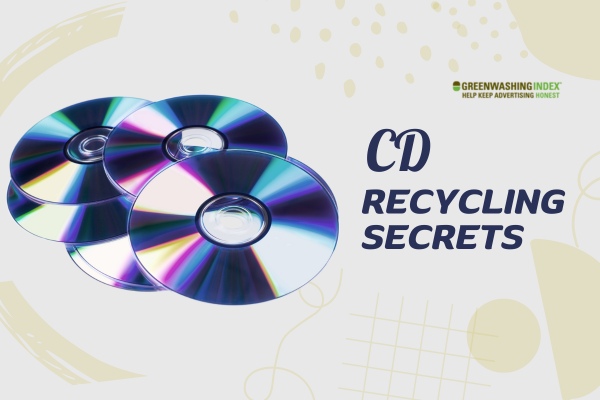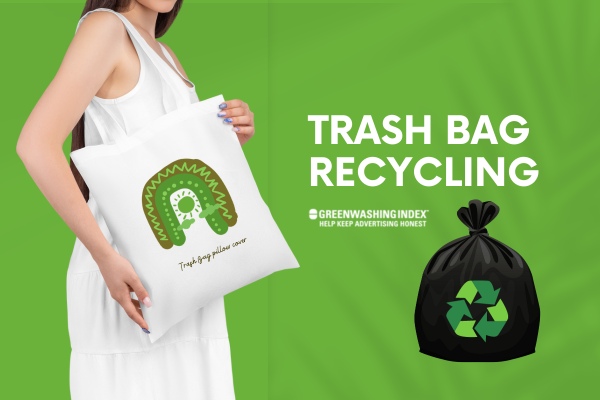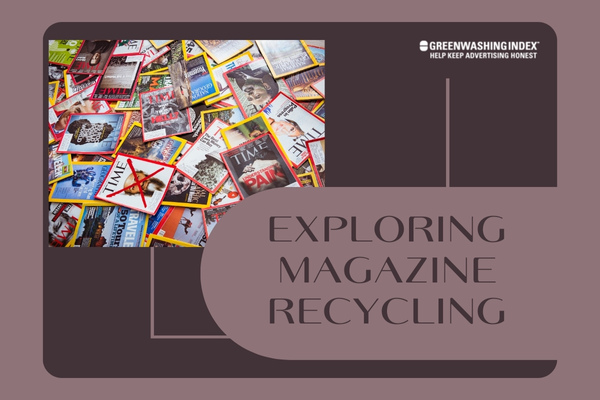Have you ever thought about what happens to old CDs you throw away? With CD Recycling, turning those forgotten tunes into something new and exciting is easier than ever! Nowadays, we’re always on the lookout for ways to reduce waste and help our planet. Take a minute and imagine giving your dusty old discs a second life – doesn’t just thinking about it make you feel like a recycling superhero? Well, grab your cape because I’m going to show you how easy and impactful it can be!
Transforming old CDs doesn’t have to be complicated. In fact, it’s quite simple. Once you know the basics of safely taking apart CDs and understand which parts can be reused or upcycled, the possibilities are endless!
Whether it’s crafting a shiny mosaic or sending them off to professional recycling services – there are so many eco-friendly options available for those discs that were once staples of our past music experiences.
What You Will Discover Here:
- Foolproof steps for breaking down your old CDs
- Fun DIY ideas that breathe new life into outdated media
- Expert tips on finding CD recycling services near you
- Insight on the environmental perks of repurposing tech waste
Recognizing the Importance of Recycling CDs
When I think about how technology has moved on, it strikes me that old CDs are just left behind. We had music, movies, and even computer programs on these shiny discs. Now, many of us have left them to collect dust. But here’s the thing: those discs shouldn’t just be thrown away. CD recycling is super important to consider.
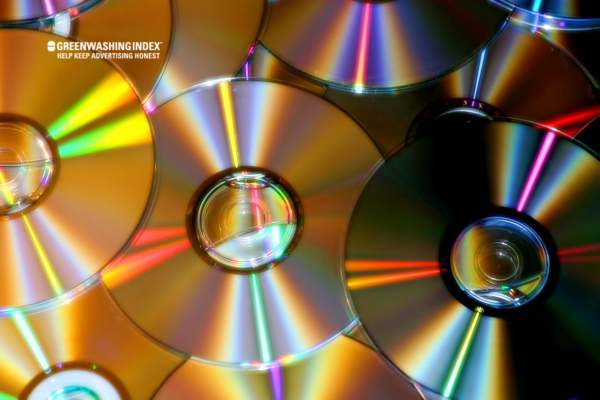
Key Factors Impelling the Need for CD Recycling
Firstly, let me lay out why recycling CDs is a big deal.
- CDs are made of plastic: This might not sound new, but plastics can take hundreds of years to break down in landfills. When you toss out a CD, it’s going to sit there for ages.
- Chemicals are involved: CDs aren’t just made from any plastic. They contain chemicals like bisphenol A (BPA), which can be harmful if they seep into our soil or water.
- You save resources: By choosing CD recycling, we don’t need to make as much new plastic. That means less oil used and fewer emissions – that’s good for our planet!
- It reduces waste: This one’s clear – when we recycle, we keep stuff out of those overflowing landfills.
Discussing the Environmental Impact of Discarding CDs
Let’s talk about what happens if we don’t recycle these old music buddies:
- They take up space in landfills: Imagine millions of forgotten rock anthems and movie classics piling up under dirt mountains because their discs were tossed out.
- Toxic chemicals might get loose: Those harmful chemicals I mentioned? If they leak into the ground and waterways, they could hurt plants and animals.
- Waste of materials: CDs have stuff in them like aluminum and gold – yep, tiny bits but still valuable! Throwing them away is like dumping money in the trash.
So there you go – now you know why I say CD recycling matters quite a lot: for our environment and for making better use of what we’ve already got on this Earth! Let’s not forget about all those DIY disc projects waiting out there – upcycling methods turning old tunes into new treasures!
The Actual Process of CD Recycling
When I start with CD recycling, it’s important to handle the discs carefully. CDs are made of a few different layers, and breaking them down isn’t as simple as it might seem. Here’s the step-by-step process on how to disassemble a compact disc without damaging anything:
Step 1: Prepare Your Workspace
Find a flat, clean surface where you can work comfortably. Make sure you have enough light to see what you’re doing, and put on safety glasses to protect your eyes from any small pieces that might fly up during the process.
Step 2: Separate the Disc Layers
Most CDs have a shiny metal layer and a clear plastic cover. They’re glued together. To separate them, use a piece of tape:
- Stick the tape onto the shiny side of the CD.
- Press down firmly.
- Carefully pull up one edge of the tape.
If done right, this should start lifting off that reflective layer. If it doesn’t work at first, try another piece of tape or a different spot on the disc.
Step 3: Remove The Metal Layer
Once you’ve got an edge loose with your tape, gently peel away at this metallic part until it’s completely off. You might need to use more pieces of tape to get it all. Be patient—rushing could crack or break your disc.
Step 4: Clean Up
After removing all that shiny stuff, you’ll be left with just plastic. This is what will be recycled later on! Before moving on, though, make sure there are no tiny bits left behind from that metal layer – these can’t be recycled and should be thrown away separately in your trash.
Innovative Ways to Repurpose Your Old CDs at Home
Now let’s talk about some cool DIY projects for those old discs so they don’t go to waste:
- Make Artistic Coasters:
- Clean your CDs thoroughly;
- Cut out circles from old magazines or printouts with patterns;
- Glue these onto one side of each CD;
- Once dry, seal them with clear adhesive or varnish.
You now have unique coasters for your cups!
- Create Reflective Garden Ornaments:
- Use untreated CDs as they are or paint them in bright colors;
- Attach them onto strings or around garden stakes;
When sunlight hits these ornaments, they’ll sparkle and keep birds away from your plants!
- DIY Mosaics:
- Break CDs into small pieces (wear gloves!);
- Take a plain picture frame or flowerpot;
- With strong glue (like epoxy), stick CD pieces onto these items, creating patterns.
- You’ll end up with beautiful mosaics that shine when light catches them!
Professional Services That Can Recycle Your CDs
If DIY isn’t your thing or if you just have too many discs lying around that need recycling fast, there are professional services ready to help:
- There are probably local companies in town dedicated specifically to electronic waste, which includes CD recycling;
- Stores like Best Buy sometimes offer programs where they’ll take old electronics, including those pesky obsolete discs;
- And then there are online services where you can mail in bulk amounts safely, knowing they’ll recycle every part properly.
Just check their policies – some might require fees while others operate free depending on where and how much stuff you’re sending.
- Remember When Looking For These Services:
- Always verify if they handle CD recycling ethically.
- Disposing of materials responsibly so nothing harmful gets into nature. Make sure their services fit what you’re trying to do.
- Whether it’s easy drop-off locations or complete mail-in systems, always read reviews! See what other folks say about their experiences before committing!
Materials Required for CD Recycling
If you’ve got old CDs lying around and want to get into CD recycling, you first need to know what parts of a CD can be used again. A regular CD is made of several layers. These include:
- The shiny, reflective layer that stores your data.
- A layer of lacquer that protects the reflective surface.
- Printed art or labels on the top.
Each part plays a role in how I recycle my CDs.
Identifying Reusable Components in a CD
Let me break down these layers for you so we understand what can be recycled:
- Polycarbonate plastic: This is the main material in CDs, making up most of the disc. It’s clear and strong – it’s what gives the disc its shape. This plastic can be ground down and reused to make other items like glasses or even car parts!
- Reflective metal layer: Usually made from aluminum, this thin layer holds all your music or data. In the recycling process, this metal can be separated and melted down for reuse.
- Lacquer: This keeps the aluminum safe from scratches and air, which could damage it. While this part isn’t usually reusable by itself, it can sometimes be broken down during specialized recycling processes.
- Artwork: The label side often has some ink on it, which shows either artwork or information about what’s on the CD; however, separating this ink from the plastic beneath it isn’t always easy with common home recycling methods.
Now that we have singled out these components, let’s talk about how they are actually handled when recycled correctly.
Essential Tools for Safe and Effective CD Recycling
When preparing to recycle CDs safely and effectively, there are some tools I always make sure to have handy:
- Protective gloves: Always wear gloves! Bits of plastic and metal might cut you if they break away during handling.
- Safety goggles: Protect your eyes! If you’re cutting or breaking discs apart, pieces could fly up toward your face.
- A strong pair of scissors or tin snips: These will help cut through layers neatly if I need to separate them manually; plus, they come in handy if I want to repurpose CDs into DIY projects.
- A container for sorting materials: Having boxes or bins helps me sort different parts like plastics and metals after taking them apart.
- Cleaning supplies: Sometimes there’s sticky residue left on pieces after ripping labels off; I keep rubbing alcohol and clean rags nearby just in case.
With these tools lined up on my workbench (or kitchen table), I’m ready to tackle a stack of unwanted CDs without harming myself or losing any bits that could otherwise be turned into something new through CD recycling.
Aftermath of Successful CD Recycling
When I think about CD recycling, it’s often a story of success with many happy endings. Let me share the wonderful things that come from giving these old discs a new lease on life.
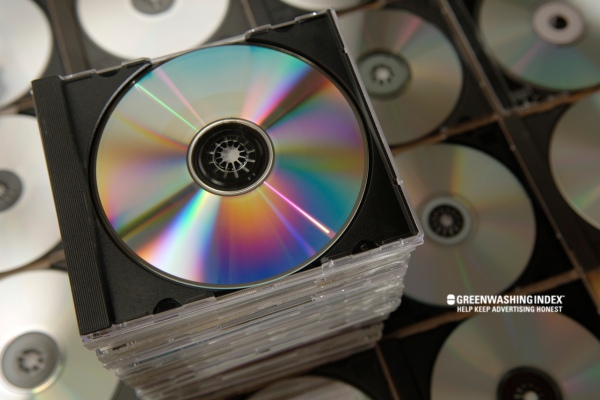
Benefits Achieved Through Proper CD Recycling
Do you know that little round disc you used to play your favorite tunes or watch movies? Well, when CDs get recycled the right way, it’s like throwing seeds onto barren land and watching a whole forest grow! Seriously, my friends, CD recycling is key to keeping our planet green and healthy.
Firstly, when we recycle CDs, we save precious resources. Those shiny discs are made from materials that don’t just pop out of thin air – they come from the earth itself. By recycling them, we don’t have to dig up more raw materials. That means less mining and drilling, which keeps Mother Nature smiling.
Also, CDs can take ages to break down if they end up in landfills. We’re talking hundreds of years here! That’s really bad for our environment because they release harmful chemicals as they sit and rot. But with good CD recycling, we make sure this doesn’t happen.
And get this – recycled CDs can turn into all sorts of cool stuff! They might become part of a traffic light or sneak their way into your car as a small piece under the dash. The possibilities are endless!
Overcoming Potential Challenges in the Process
Now let me be straight – recycling CDs isn’t always smooth sailing. There can be some bumps along the road that need careful handling.
One big challenge is taking those CDs apart because they’re made up of different parts that need separating before being reborn as something new. There’s plastic (a major part), but there are also metals inside, like aluminum or gold!
So, how do people deal with this tricky step? With patience and smarts! They find safe ways to split up each material without causing harm or wasting anything. It takes special machines sometimes, but hey – it’s worth it for our Earth!
We’ve also got to look out for labels on those discs because not everything on a CD can go into the same recycling bin. Those papers might have glues or inks on them that are not friendly to our planet at all when burned or left lying around.
In short, overcoming these challenges is all about knowledge – knowing what goes where and why so that each piece finds its right place in the cycle again.
Recycling CDs is smart; it keeps our water cleaner by causing less pollution and helps keep big piles of waste smaller, too.
So whenever you hear about CD recycling, remember: it’s not only about cutting down waste – though that’s awesome too – but also repurposing with the purpose of an eco-friendly future one shiny disc at a time!
FAQs
How can I safely break down an old compact disc?
To break down a CD safely, first cover it with a cloth to prevent shards from flying. Then, snap the disc into small pieces. Be careful and wear gloves to protect your hands.
Are there companies that will recycle my old compact discs?
Yes, some companies specialize in CD recycling. Look for local electronics recycling programs or online services that accept CDs for recycling.
What are some creative ways that I can reuse my outdated compact discs?
You can use old CDs for DIY projects like making reflective coasters, creating wall art, or decorating plant pots. They’re great for adding sparkle to crafts!
Conclusion
CD recycling is not just an act of responsibility towards our environment but also a creative endeavor. It bridges the gap between sustainability and innovation, allowing us to reduce our ecological footprint while still indulging in our love for arts and crafts. Taking old discs and transforming them through upcycling methods not only benefits the planet by curbing waste but also provides an opportunity for everyone to engage in eco-friendly technology use.
Taking part in CD recycling isn’t complicated—it’s about understanding the impact of these materials on the environment and making concerted efforts to reuse or repurpose them. Whether you’re a DIY enthusiast or someone passionate about sustainable media, your efforts count!
Takeaway Points:
- CD Recycling is crucial for reducing environmental waste.
- Disassembling a CD safely is easy when following step-by-step instructions.
- Old CDs can be repurposed into unique DIY projects.
- Professional services are available for those who prefer to recycle CDs conveniently.
- Understanding which parts of a CD are reusable is key to successful recycling.
- Essential tools are needed for effective disc repurposing.
- Properly recycled CDs significantly contribute to environmental conservation.

